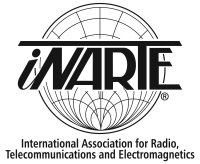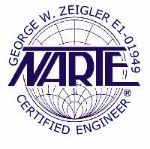Other Power Quality Solutions
Flicker Analysis
Flicker is a name given to frequent voltage variations caused by cyclical loads. The most troublesome aspect of flicker is usually the visible variations in output of incandescent lamps and TV screens in plants and neighboring homes.
Quality-control problems or production interruptions can also be the result of severe flicker. Flicker can be caused by arc furnaces, welders, thyristor-fed DC drives, reciprocating compressors, chipper drives, hammer mills and frequent motor starting. Available solutions to a flicker problem include alterations to operator control, var compensation, or system configurations.
SPGS engineers conduct measurements and analysis to determine cost-effective solutions to control flicker issues.
Harmonic Analysis
The increasingly widespread application of SCR-controlled drives in industrial processes has brought harmonic consideration into the design of electrical systems. It is common practice for industrial plants with major harmonic sources to add harmonic filters to limit voltage distortion and harmonic current flows into the utility system. On existing systems, harmonic measurements are usually made to determine the extent of voltage and current distortion and are used as a base for further calculations. If calculations show that harmonic filters are required to meet specified criteria, filters can be designed and analytically tested.
Harmonic filters must be integrated with power factor correction capacitors and must withstand any harmonics absorbed from a utility system or neighboring plant. Filters must also continue to function when loads in the plant vary or major elements such as transformers are taken out of service for maintenance. With careful planning, filters can be designed to reliably serve their intended purpose without creating new problems.
SPGS’ harmonic analysis will reveal:
- Harmonic current paths
- Amount of harmonic current flowing into the utility system
- Generated harmonic voltages
- Potential resonances
- Performance of filter and capacitor bank tuning options
- Comparison of results against the latest IEEE 519 standard
Power Factor Analysis
Power factor improvement is a cost-effective method to meet the reactive demand of a plant or distribution system. Power-factor improvement may be warranted simply from the benefits it provides in voltage increase and reduced loading of transformers, cables, and generators.
The technical and economic value of power factor improvement is verified through an analysis of the plant electrical system and loads. Also, planning for present and future kVAR needs may require additional studies. If harmonics are present, the selection of capacitors will be more complex and the location more critical. Frequent switching of capacitors can cause transient over-voltages, and isolated motors on capacitors may have to be examined for self-excitation.
Using software, SPGS engineers can provide power flow analysis to reveal actual power factor correction, while providing analysis of potential problem areas. Excessive voltage regulation may indicate a need for implementing automatic voltage control equipment.
Power Flow Analysis
SPGS’ power flow analysis utilizes a computer model to examine normal steady state and contingency conditions in an electrical system. A power-flow solution provides voltages and equipment loadings under a given set of system conditions. A series of power-flow cases can show the effects of various design alternatives or equipment outages on system operation.
An engineer can use power flow cases to:
- Examine benefits of load-tap-changing transformers
- Examine benefits of power-factor correction capacitors
- Select locations for power-factor correction capacitors
- Set taps on fixed-tap transformers
- Explore steady state performance of expansion alternatives
- Determine ratings for new or upgraded circuits
- Determine equipment loading
In addition, a power flow case can provide a snapshot of system voltages during motor starting, impact loading, or other short-term events that affect system voltages.
Surge Protection Device Studies
SPGS' surge-protection studies examine transient over-voltages that may result from lightning and equipment switching. Surge-protection studies are required where there high incidence of lightning exposure or where capacitors are switched frequently. These transient problems may become evident after an installation is complete and equipment is in operation. In such cases, there are significant constraints on solutions.
The SPGS study may range from simple selection of surge arresters to extensive field measurements, which determine whether the switching equipment is working correctly.
System Reliability Analysis
Industrial electrical power systems can be designed to provide a wide range of reliability levels. Generally, system costs increase as the reliability of the design increases. The applicable process costs should include not only lost production, but risks to equipment and personnel when interruptions occur.
SPGS reliability studies can be conducted according to:
- Recommendations provided by a SPGS engineer experienced with industrial power systems, advising alternate means of serving critical loads.
- Analysis, using EasyPower® software and industry-obtained outage rates for equipment and downtime for repair.
Analytical tools and experienced engineers can be combined to evaluate alternative electrical system arrangements, and provide quantitative measures of reliability. The costs of reliability can then be compared with the potential losses due to process interruptions. This allows for informed decisions regarding electrical system investment.





